-
 Bitcoin
Bitcoin $106,754.6083
1.33% -
 Ethereum
Ethereum $2,625.8249
3.80% -
 Tether USDt
Tether USDt $1.0001
-0.03% -
 XRP
XRP $2.1891
1.67% -
 BNB
BNB $654.5220
0.66% -
 Solana
Solana $156.9428
7.28% -
 USDC
USDC $0.9998
0.00% -
 Dogecoin
Dogecoin $0.1780
1.14% -
 TRON
TRON $0.2706
-0.16% -
 Cardano
Cardano $0.6470
2.77% -
 Hyperliquid
Hyperliquid $44.6467
10.24% -
 Sui
Sui $3.1128
3.86% -
 Bitcoin Cash
Bitcoin Cash $455.7646
3.00% -
 Chainlink
Chainlink $13.6858
4.08% -
 UNUS SED LEO
UNUS SED LEO $9.2682
0.21% -
 Avalanche
Avalanche $19.7433
3.79% -
 Stellar
Stellar $0.2616
1.64% -
 Toncoin
Toncoin $3.0222
2.19% -
 Shiba Inu
Shiba Inu $0.0...01220
1.49% -
 Hedera
Hedera $0.1580
2.75% -
 Litecoin
Litecoin $87.4964
2.29% -
 Polkadot
Polkadot $3.8958
3.05% -
 Ethena USDe
Ethena USDe $1.0000
-0.04% -
 Monero
Monero $317.2263
0.26% -
 Bitget Token
Bitget Token $4.5985
1.68% -
 Dai
Dai $0.9999
0.00% -
 Pepe
Pepe $0.0...01140
2.44% -
 Uniswap
Uniswap $7.6065
5.29% -
 Pi
Pi $0.6042
-2.00% -
 Aave
Aave $289.6343
6.02%
Is the appearance of a cross star at a high position a sign of a change in the market? How to operate the next day?
A cross star at a high position in crypto trading signals market indecision and potential reversal, especially when confirmed by volume and technical indicators.
Jun 16, 2025 at 01:29 pm
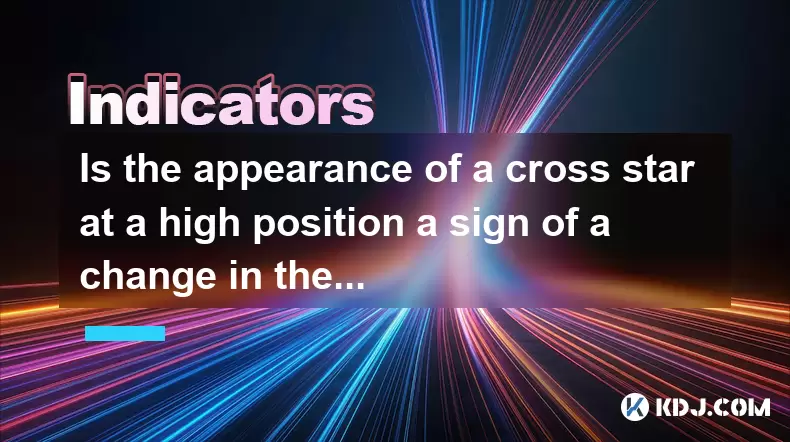
What Is a Cross Star in Cryptocurrency Trading?
A cross star is a candlestick pattern that appears when the opening and closing prices are nearly equal, with long upper and lower shadows. This formation typically indicates indecision in the market. In the cryptocurrency space, where volatility reigns supreme, recognizing such patterns becomes crucial for traders. The cross star at a high position suggests that after a significant uptrend, buyers and sellers are in equilibrium.
This candlestick pattern can be spotted across various timeframes — from 1-minute charts to daily or weekly ones. When it forms near resistance levels or after extended rallies, its significance increases. Traders interpret this as a potential reversal signal, especially if volume is higher than average during its formation.
Why Does a High-Position Cross Star Matter?
When a cross star appears at a high position, it often signals exhaustion among bullish traders. During an uptrend, each rally requires increasing buying pressure to sustain momentum. If this pressure diminishes, the price tends to stall. A cross star in this context reflects hesitation — bulls are unable to push prices higher, while bears begin testing support levels.
In crypto markets, where sentiment can shift rapidly due to news, regulation, or whale activity, such candlestick formations gain added importance. The high-position cross star may mark the beginning of profit-taking or even a trend reversal. However, not all cross stars lead to immediate downturns; confirmation through subsequent candles is essential before making trading decisions.
How to Confirm the Significance of a Cross Star Pattern
To avoid false signals, traders should look for additional confirmations following the appearance of a cross star at a high position. Here are key elements to consider:
- Volume: Check whether the volume during the cross star's formation was above average. Elevated volume adds weight to the pattern.
- Next Day Candle: Observe the candle that follows the cross star. If it closes below the cross star’s low, it could signal a bearish reversal.
- Support and Resistance Levels: Analyze whether the cross star formed near a known resistance zone. If so, the likelihood of a pullback increases.
- Moving Averages and Indicators: Use tools like RSI or MACD to gauge overbought conditions. If the RSI is above 70 and the cross star appears, the probability of a correction rises.
These factors help validate the cross star pattern and reduce the risk of premature trading decisions.
Operational Strategies for the Day After a Cross Star Appears
If a cross star appears at a high position, traders have several options depending on their risk tolerance and strategy:
- Short-Term Traders: Consider placing a sell order if the next day’s candle closes below the cross star’s low. Set a stop-loss just above the cross star’s high to manage risk.
- Swing Traders: Look for a breakdown below key support levels before entering a short position. Wait for two consecutive bearish candles after the cross star to increase accuracy.
- Long-Term Investors: Use this as a warning sign to secure partial profits. Avoid panic selling but remain cautious about further downside movement.
- Trailing Stop Adjustment: For those still holding long positions, adjust trailing stops tighter to protect gains in case of a sudden reversal.
Each approach must be tailored to individual strategies and account sizes. It is also vital to monitor global events or announcements that might influence the market the next day.
Technical Tools That Aid Decision-Making
Leveraging technical indicators can enhance decision-making when a cross star appears at a high position. Here are some tools that provide clarity:
- Bollinger Bands: If the cross star appears near the upper Bollinger Band, it could indicate overextension and a possible reversion to the mean.
- MACD (Moving Average Convergence Divergence): Watch for bearish crossovers or divergence between price and MACD line to confirm weakness.
- Ichimoku Cloud: If the price is above the cloud but starts to dip into or below it, it may signal weakening momentum.
- Fibonacci Retracement: Identify key retracement levels from the recent rally. A drop below the 38.2% level post-cross star may suggest deeper corrections ahead.
Combining these tools with candlestick analysis helps form a more robust trading plan and reduces reliance on a single indicator.
Frequently Asked Questions
Q1: Can a cross star ever be a bullish signal?
Yes, a cross star can sometimes act as a bullish reversal pattern if it appears at a strong support level or after a prolonged downtrend. In such cases, it indicates indecision followed by potential upside momentum.
Q2: How reliable is the cross star compared to other candlestick patterns?
While the cross star is useful, it is less reliable than patterns like the engulfing pattern or hammer. It works best when combined with volume and other technical indicators.
Q3: Should I always exit my long position when a cross star appears at a high point?
Not necessarily. Evaluate the broader trend, volume, and supporting indicators before deciding. Sometimes the market may consolidate briefly before continuing higher.
Q4: What is the difference between a cross star and a doji?
A doji is a type of cross star where the open and close are almost identical, forming a horizontal line. While all dojis are cross stars, not all cross stars are dojis. Dojis tend to be stronger signals of indecision.
Disclaimer:info@kdj.com
The information provided is not trading advice. kdj.com does not assume any responsibility for any investments made based on the information provided in this article. Cryptocurrencies are highly volatile and it is highly recommended that you invest with caution after thorough research!
If you believe that the content used on this website infringes your copyright, please contact us immediately (info@kdj.com) and we will delete it promptly.
- 2025-W Uncirculated American Gold Eagle and Dr. Vera Rubin Quarter Mark New Products
- 2025-06-13 06:25:13
- Ruvi AI (RVU) Leverages Blockchain and Artificial Intelligence to Disrupt Marketing, Entertainment, and Finance
- 2025-06-13 07:05:12
- H100 Group AB Raises 101 Million SEK (Approximately $10.6 Million) to Bolster Bitcoin Reserves
- 2025-06-13 06:25:13
- Galaxy Digital CEO Mike Novogratz Says Bitcoin Will Replace Gold and Go to $1,000,000
- 2025-06-13 06:45:13
- Trust Wallet Token (TWT) Price Drops 5.7% as RWA Integration Plans Ignite Excitement
- 2025-06-13 06:45:13
- Ethereum (ETH) Is in the Second Phase of a Three-Stage Market Cycle
- 2025-06-13 07:25:13
Related knowledge
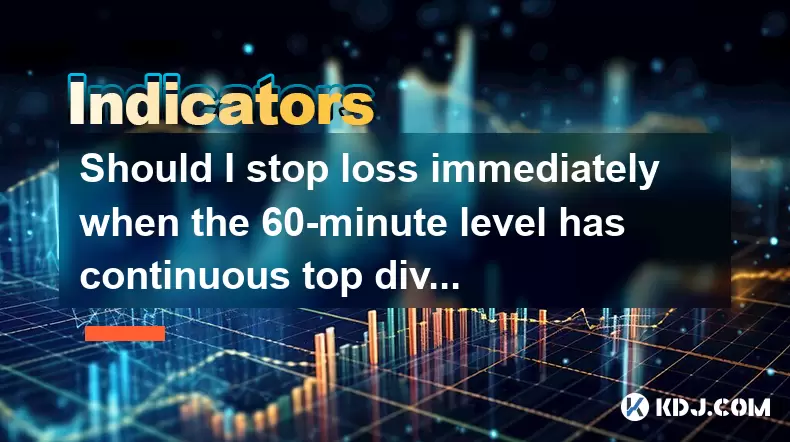
Should I stop loss immediately when the 60-minute level has continuous top divergence?
Jun 17,2025 at 05:28pm
Understanding Top Divergence in the 60-Minute ChartIn cryptocurrency trading, top divergence refers to a technical signal where the price of an asset makes higher highs while the indicator (often RSI or MACD) makes lower lows. This is commonly interpreted as a sign of weakening momentum and potential reversal. When this occurs on the 60-minute chart, it...
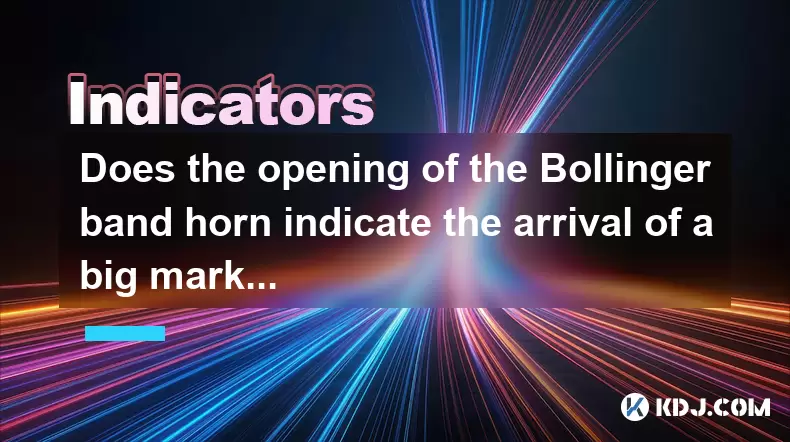
Does the opening of the Bollinger band horn indicate the arrival of a big market?
Jun 17,2025 at 06:28pm
Understanding the Bollinger Bands and Their StructureBollinger Bands are a widely used technical analysis tool in the cryptocurrency market, developed by John Bollinger. They consist of three lines: a simple moving average (SMA), typically set at 20 periods, and two standard deviation bands above and below this SMA. These bands dynamically expand and co...
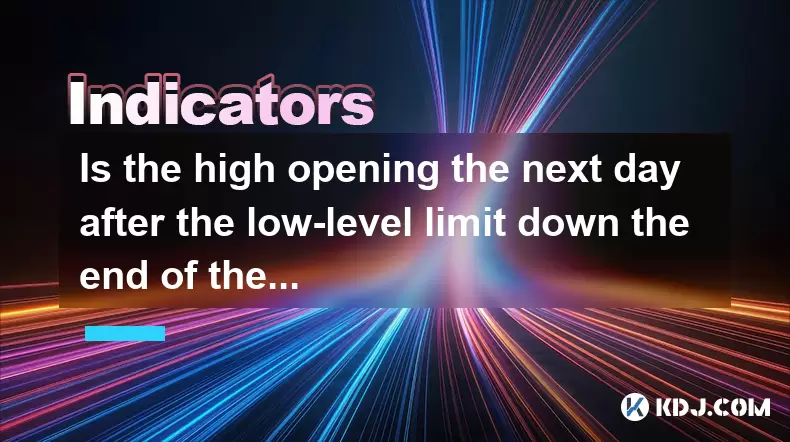
Is the high opening the next day after the low-level limit down the end of the wash?
Jun 17,2025 at 05:57pm
Understanding the Concept of a Limit Down and Its ImplicationsIn the world of cryptocurrency trading, a limit down refers to a situation where the price of a digital asset drops sharply, reaching its maximum allowable decline within a specific time frame. This mechanism is often seen on exchanges that implement daily price limits to prevent excessive vo...
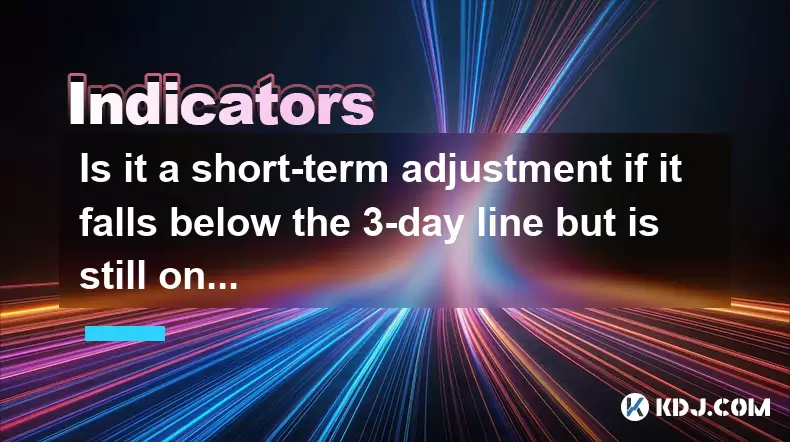
Is it a short-term adjustment if it falls below the 3-day line but is still on the 10-day line?
Jun 17,2025 at 04:07pm
Understanding the 3-Day and 10-Day Moving AveragesIn cryptocurrency trading, moving averages are essential tools for gauging trend strength and potential reversals. The 3-day moving average is a short-term indicator that reflects recent price action with minimal lag, making it highly sensitive to sudden market shifts. In contrast, the 10-day moving aver...
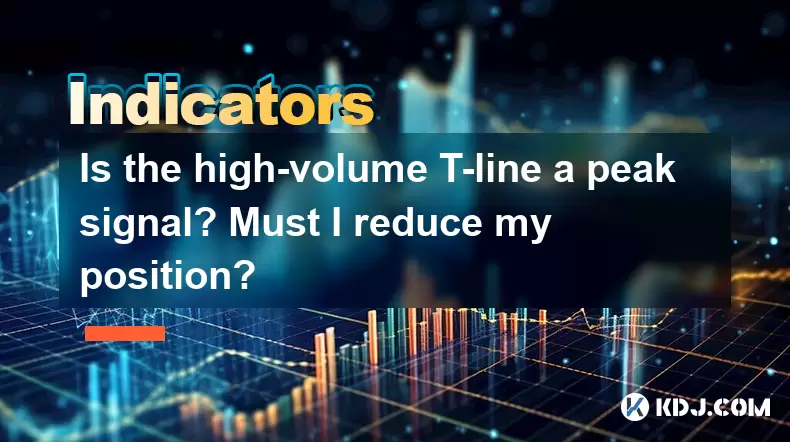
Is the high-volume T-line a peak signal? Must I reduce my position?
Jun 17,2025 at 06:07pm
Understanding the T-Line Pattern in Cryptocurrency TradingIn cryptocurrency trading, technical patterns are frequently used by traders to anticipate price movements. One such pattern is the T-line, which appears on candlestick charts and is characterized by a long upper or lower shadow with little or no body. A high-volume T-line occurs when this patter...
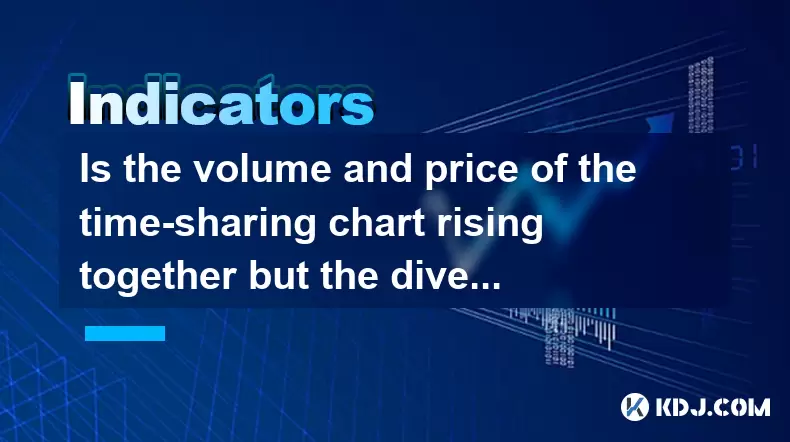
Is the volume and price of the time-sharing chart rising together but the dive at the end of the trading day a lure to buy more? Should I run?
Jun 17,2025 at 07:28pm
Understanding the Time-Sharing Chart DynamicsIn cryptocurrency trading, time-sharing charts are essential tools for short-term traders. These charts show real-time price movements along with trading volume over a specific period, usually within a day. When you observe that both price and volume rise together, it typically signals strong buying pressure ...

Should I stop loss immediately when the 60-minute level has continuous top divergence?
Jun 17,2025 at 05:28pm
Understanding Top Divergence in the 60-Minute ChartIn cryptocurrency trading, top divergence refers to a technical signal where the price of an asset makes higher highs while the indicator (often RSI or MACD) makes lower lows. This is commonly interpreted as a sign of weakening momentum and potential reversal. When this occurs on the 60-minute chart, it...

Does the opening of the Bollinger band horn indicate the arrival of a big market?
Jun 17,2025 at 06:28pm
Understanding the Bollinger Bands and Their StructureBollinger Bands are a widely used technical analysis tool in the cryptocurrency market, developed by John Bollinger. They consist of three lines: a simple moving average (SMA), typically set at 20 periods, and two standard deviation bands above and below this SMA. These bands dynamically expand and co...

Is the high opening the next day after the low-level limit down the end of the wash?
Jun 17,2025 at 05:57pm
Understanding the Concept of a Limit Down and Its ImplicationsIn the world of cryptocurrency trading, a limit down refers to a situation where the price of a digital asset drops sharply, reaching its maximum allowable decline within a specific time frame. This mechanism is often seen on exchanges that implement daily price limits to prevent excessive vo...

Is it a short-term adjustment if it falls below the 3-day line but is still on the 10-day line?
Jun 17,2025 at 04:07pm
Understanding the 3-Day and 10-Day Moving AveragesIn cryptocurrency trading, moving averages are essential tools for gauging trend strength and potential reversals. The 3-day moving average is a short-term indicator that reflects recent price action with minimal lag, making it highly sensitive to sudden market shifts. In contrast, the 10-day moving aver...

Is the high-volume T-line a peak signal? Must I reduce my position?
Jun 17,2025 at 06:07pm
Understanding the T-Line Pattern in Cryptocurrency TradingIn cryptocurrency trading, technical patterns are frequently used by traders to anticipate price movements. One such pattern is the T-line, which appears on candlestick charts and is characterized by a long upper or lower shadow with little or no body. A high-volume T-line occurs when this patter...

Is the volume and price of the time-sharing chart rising together but the dive at the end of the trading day a lure to buy more? Should I run?
Jun 17,2025 at 07:28pm
Understanding the Time-Sharing Chart DynamicsIn cryptocurrency trading, time-sharing charts are essential tools for short-term traders. These charts show real-time price movements along with trading volume over a specific period, usually within a day. When you observe that both price and volume rise together, it typically signals strong buying pressure ...
See all articles

























































































